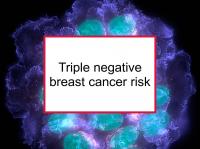A new study has reported that age at diagnosis of Latinas with breast cancer in Mexico City is 11 years younger than the average age of patients in the general U.S. population. In addition, the proportion of triple negative (ER-/PR-/HER2-) breast cancer is higher than that reported in white women with breast cancer.
Triple negative breast cancer represents approximately 15% of all invasive breast cancers, but some studies have reported that prevalence differs according to ethnicity. To conduct the study, the authors analyzed the records of 2,074 Hispanic women with breast cancer who were treated at the National Cancer Institute in Mexico City between 1998 and 2008.
The median age at diagnosis was 50 years in the overall study group. Approximately 23% of the women had triple negative breast cancer. Triple negative breast cancer was found to be associated with younger age at diagnosis, premenopausal status, greater number of children, use of birth control pills or other hormonal contraceptives, high tumor grade, and advanced disease.
Study results
Postmenopausal breast cancer patients who were normal weight/underweight (body mass index (BMI) < 25 kg/m2) or overweight but not obese (BMI < 30) were more likely to have developed triple negative disease than obese women. Triple negative breast cancer patients had higher risk of recurrence and lower breast cancer-specific survival than patients with non-triple negative breast cancer.
Please see our article on triple negative prognosis for more information.
